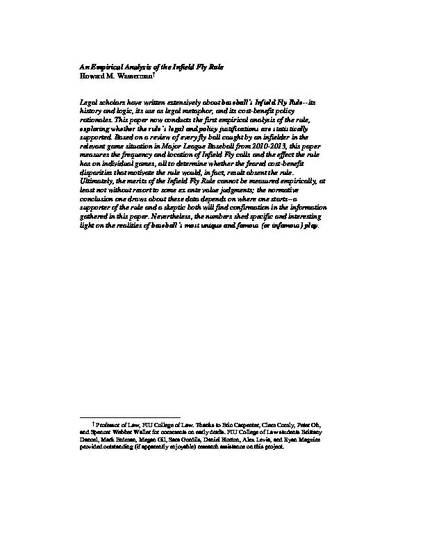
Legal scholars have written extensively about baseball’s Infield Fly Rule--its history and logic, its use as legal metaphor, and its cost-benefit policy rationales. This paper now conducts the first empirical analysis of the rule, exploring whether the rule’s legal and policy justifications are statistically supported. Based on a review of every fly ball caught by an infielder in the relevant game situation in Major League Baseball from 2010-2013, this paper measures the frequency and location of Infield Fly calls and the effect the rule has on individual games, all to determine whether the feared cost-benefit disparities that motivate the rule would, in fact, result absent the rule. Ultimately, the merits of the Infield Fly Rule cannot be measured empirically, at least not without resort to some ex ante value judgments; the normative conclusion one draws about these data depends on where one starts--a supporter of the rule and a skeptic both will find confirmation in the information gathered in this paper. Nevertheless, the numbers shed specific and interesting light on the realities of baseball’s most unique and famous (or infamous) play.
- Empirical,
- Infield Fly Rule,
- Baseball
Available at: http://works.bepress.com/howard_wasserman/17/
